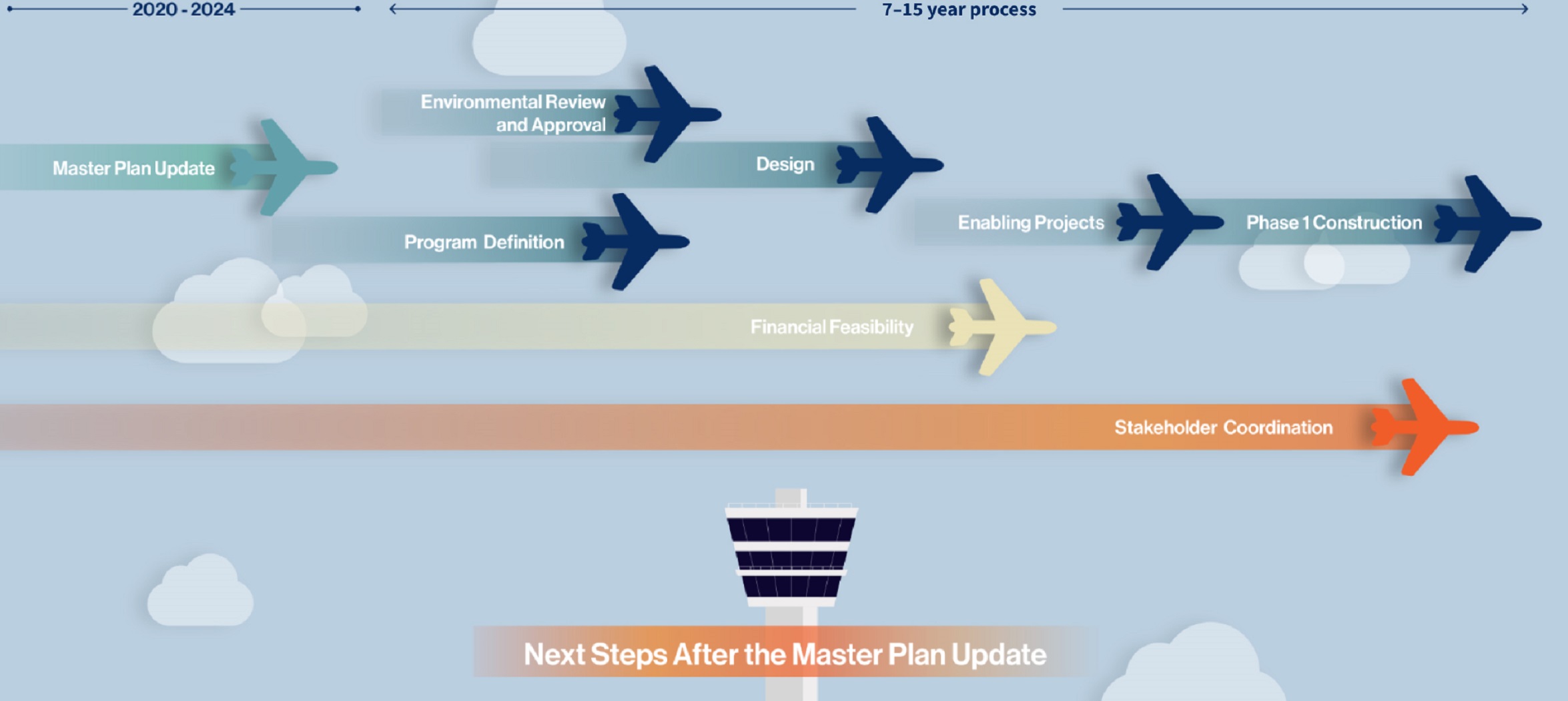Embarking on an Airport Master Plan Update
Philadelphia International Airport's (PHL) Master Plan Update is a strategic framework, carefully being developed through stakeholder engagement, technical analysis, and design which provides clear guidance on airport operations and future development. Plan implementation will support improved customer experience, optimize land use, expand economic opportunities for the region, and promote environmental stewardship, efficiency, and safety. The overall plan needs to be affordable, with an implementable plan that is incremental. PHL’s previous Master Plan was developed in 2007 with a major update in 2011 as part of the Capacity Enhancement Program. Typically, the Airport aims to update the Master Plan every 10 years to realign goals and objectives with projections and current trends.

Why is Philadelphia International Airport doing a Master Plan Update?
PHL is updating the Master Plan to accommodate the ongoing growth of the region and modernize our facilities and operations. This planning process will leverage internal and external stakeholders to identify infrastructure and facility needs with a focus on developing solutions to support the future development at the Airport. The resulting Master Plan Update will outline a capital improvement program and 20-year implementation plan that clearly establishes how improvements can be made and potentially funded to support the vision of a world class airport that connects Philadelphia’s people and economy to the rest of the world.
Prior to the onset of the pandemic early in 2020, PHL set an all-time high record for passenger volume in 2019, welcoming over 33 million total passengers. Observing this trend, PHL prepared by bringing on board a nationally recognized aviation consultant to conduct a Master Plan Update and develop a "roadmap" to continue to allow the airport to accommodate growth through 2040 and beyond.
The focus of the Master Plan Update is on the passenger terminal and landside area of the airport but does not focus in detail on the airside. Landside is defined as the public side of an airport, including the roads, garages and terminal building that the general public uses. Airside is defined as the side of an airport that the aircraft use, including runways, taxiways and areas that support aircraft activities.
Implementation
PHL is working closely with the Federal Aviation Administration to coordinate anticipated activity levels by 2040. There are many factors that affect how implementation of the proposed projects in the Master Plan Update will move forward, including ensuring that certain thresholds are exceeded to confirm efforts are in line with operational demands. Once the Master Plan Update is completed, next steps will include 7 - 15 years of detailed planning, environmental review, and architectural design before reaching the construction phase.
